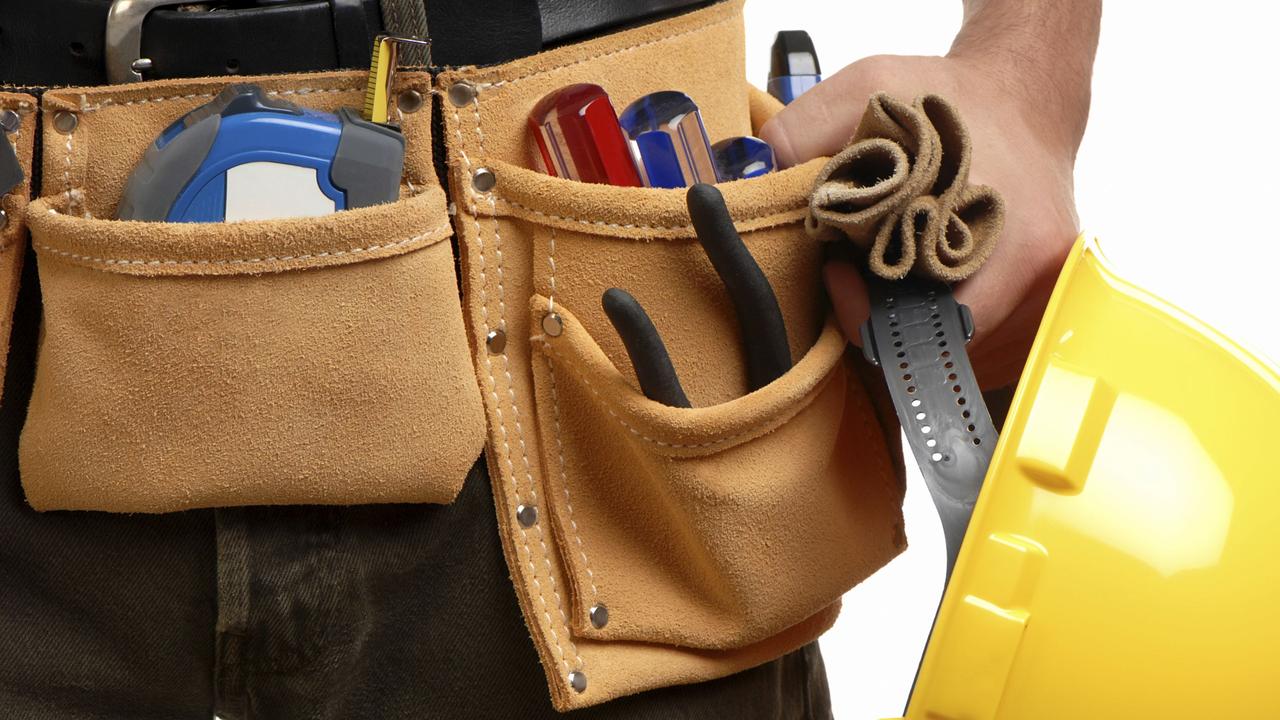Truck driver Darren Hicks reported over horror South-Eastern Freeway crash
THE driver of a truck that killed two people in a horrific crash at the bottom of the South Eastern Freeway almost a year ago has been reported by police for causing death by dangerous driving.
SA News
Don't miss out on the headlines from SA News. Followed categories will be added to My News.
- Saving Louise Compton: Inside story on 2014 SE Freeway truck crash
- How police drones provided crucial view to freeway horror
- Coroner: Truck sped at 151km/h before hitting cars, killing two
- Inquest: Freeway needs forced stops, speed limit cuts
- Crash driver’s family reeling from horror crash
THE driver of a truck that killed two people in a horrific crash at the bottom of the South Eastern Freeway almost a year ago has been reported by police for causing death by dangerous driving.
Darren Hicks, 30, was reported by police on Friday after a “detailed investigation’’ by the Major Crash Investigation unit into the collision at the intersection of the freeway with Cross and Glen Osmond roads on August 18 last year.
The police report must go to court before any formal charges can be laid, but investigators want Hicks tried on two counts, one for each of the people killed in the crash.
The police action against the Netley resident comes within days of the first anniversary of the smash that killed Thomas Speiss, 56, and Jacqueline Byrne, 41.

It is understood a second truck from the same freight company had stopped at the scene moments after the crash and the driver told police what he had witnessed.
Mr Hicks, who was so seriously injured his right leg had to be amputated, was driving a Transpacific truck laden with sewage when it crashed while travelling at an estimated 150km/h.
A preliminary inquest hearing was held within days and the Coroner made a series of immediate recommendations in order to prevent another tragedy, but a date for a full inquest is yet to be set.
The tragic deaths prompted the Government to reduce the speed limit for cars between the Stirling interchange and the lower arrester beds from 100km/h to 90km/h and set the speed limit at 60km/h for all trucks and buses.
New police figures show truck drivers are generally slowing down on the steep descent into Adelaide, but some drivers continue to ignore new speed limits and both the Government and the trucking industry admit more must be done to prevent deaths.
According to official police figures, heavy vehicles have been clocked travelling 30km/h or more over the speed limit fifteen times in the past 12 months.
On May 4th this year, one was recorded travelling at 108km/h in Leawood Gardens — 48km/h above the speed limit.
The acting officer in charge of the Traffic Support Branch, Inspector Steve Kameniar, said speeding in a heavy vehicle was “particularly dangerous due to the catastrophic consequences that are likely to result in a collision’’.

“It is very disturbing to find that a number of heavy vehicle drivers are continuing to exceed the speed limits by these amounts on the freeway, after we have only too recently witnessed the catastrophic consequences that can result from brake failure when descending the freeway,’’ he said.
South Australian Road Transport Association executive director Steve Shearer said there had been recent improvements from drivers, but just one truck could cause a disaster.
“There’s still a few people, either through stupidity or sheer ignorance, who continue to get it wrong,” he said.
The speed-limit change, together with the publicity created in the aftermath of last year’s accident, has helped reduce dangerous driving on the descent.
In 2013/14, 14 trucks used arrester beds. But since August last year there have been only three — all due to brake malfunctions.
Between the start of April and July in 2014 — before the crash — 792 heavy vehicles were caught speeding.
In the corresponding period one year later — after the crash — just 216 vehicles were caught.
Edward Lawrie, a lawyer for the Transport Workers Union, said the incident had been a catalyst for improvements.
“What happened on the 18th of August was absolutely horrific, but it was a major wake up call for the industry,” he said.

The State Government is consulting on a third arrester bed and dropping the speed limit for trucks to 40km/h, and the Federal Government has established a committee to investigate road safety.
A spokesman for federal Infrastructure Minister Warren Truss told The Advertiser that there was co-operation between levels of government to address the South Australian coronial recommendations.
State Transport Minister Stephen Mullighan said that “investigations are continuing’’ into reducing the heavy-vehicle speed limit to 40kmh and a third arrester bed.
However, he said “significant safety issues remain with both these proposals’’.
“After the crash, the State Government took early and decisive action in an unprecedented scale to improve the safety of the road,’’ Mr Mullighan said.
Technology has also emerged in the last year to improve safety.
Since the accident, the State Government has received a demonstration from local driver-training company Sydac of a simulator converted specifically to teach truck drivers how to approach the descent.
Sydac managing director Dermot Dixon said the simulator “clearly demonstrated how descending this steep section of road incorrectly can end badly”.
Nationally the Federal Government is considering making autonomous braking on trucks mandatory, to follow similar moves in Europe and the US.
Bill McKinley, from the Australian Trucking Association, told a committee in Canberra on Friday that “the potential safety benefits are absolutely massive”.
SA Freight Council chief executive officer Neil Murphy hopes the improved safety record will contribute to an improved relationship between truck and car drivers.
“Work needs to be done in terms of lifting the profile of the role that heavy vehicles play in the community and the need for the community and heavy vehicles to better interact on the network,” he said.
RAA road safety manager Charles Mountain said driver education and the reduced speed limits were key factors to making the descent safer.
“There has also been an increased level of truck inspections,’’ Mr Mountain said.


